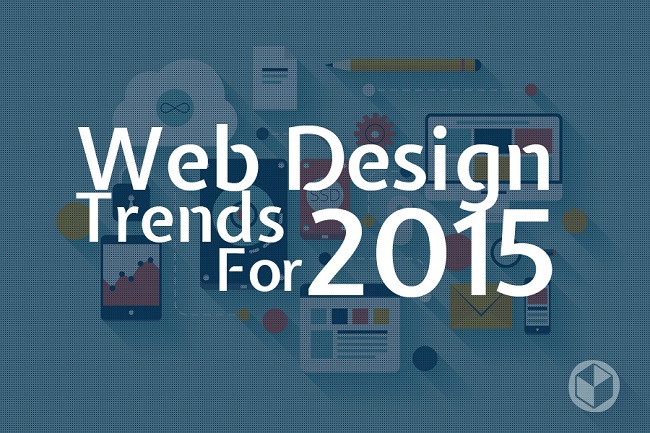2015 is indeed a turbulent year for the web design industry. Many yesteryear’s practices are already lined up for being declared outdated. On the other hand, the new trends haven’t yet gained a footing.
In a year down the line, the fate of some of the existing design trends will be clear to us. A year down the line, we’ll get our answers as to whether they are going to stay or leave. Some of the penetrating design trends of today are
Parallax Scrolling
This technique was originally used to design the graphics of video games, but it has made its way through the mainstream web design industry now. A website with parallax scrolling displays a unique pattern, such that the movement of background images gets slower than that of the foreground images.
Parallax scrolling consists of many nuances. A programmer can apply different parallax scrolling effects to a website. Such effects might involve different layers and make them move at varied speed. You can check some examples of Parallax Scrolling to get a comprehensive idea on it.
The best way to understand various shades of parallax scrolling is to think of a video game, and how the animations move. The cycling of repeating patterns qualify as a unique design trend and parallax scrolling can implement that.
Ghost Buttons
Ghost buttons saw their importance surging in 2014. They have been one of the signature design styles last year, and this year also, their relevance is totally intact. In case you don’t know what ghost buttons are, they have all characteristics similar to a conventional button, barring one; they are transparent.
Put it differently, a ghost button is an empty button. You can see the background of a site through a ghost button. Some remarkably attractive websites with ghost button are here. The buttons are mostly rectangular shaped and bordered by a thin line, which is not obtrusive to user-experience.
Absence of chrome
The “No Chrome” technique hails from the minimalist design trend. Conventional design techniques help contain design elements with in borders, shapes, boxes and containers. This way, the content on the page appears different from the design elements. A traditional site header is a best example of this. The header perfectly separates the design elements from the content.
The “No Chrome” technique eliminates the need for header and footer. The ultimate aim of this technique is to remove all extra chrome and make the design simplistic. You might wonder how this trend accommodates the content on the web page. The content are accommodated through a hierarchy that moves from the left to the right direction. This technique realigns navigation and content intuitively.
Grid based design
The technique is known alternatively as modular design. The layout displays grid-like structures. Imagine the home page is split into four modules, and each of them flexes attractive design. For the grid-structure based design to be successful, the layout must be adaptive. In terms of responsive web design, adaptive layouts can be created.
When the design is fully responsive, each single grid on the screen automatically changes its size to fit itself in the space. Responsive design can evenly divide the space and make the design adaptive. Further, it also enables the designers to add elements to the modules, so the barriers between them cease to exist.
Micro UX
This design trend combines a number of elements. It emphasizes on simple innovative design. Micro UX makes a task easier to accomplish and creates a captivating experience. The idea behind Micro UX is taking the UX elements into the level of micro-interactions.
Besides creating engaging design elements, Micro UX also smoothens up the lead generation process. A shopping cart, a call-to-action button or a newsletter subscription form can be made truly appealing by using Micro UX technique.
Micro UX has already made an impact on the hand-held platform. There are many decent examples of mobile Micro UX. The technique can contain design elements and even animations within a lead capturing box, enticing users and increasing the odds of them signing up.
The five design trends are among many that have been applied by the designers over the last one year. The trends are different from one another, but a commonality between them is not difficult to observe. All these trends point at the growing importance of the minimalist design approach, which discards unnecessary elements and put the focus on what’s necessary.
Image Courtesy: www.edreamhotels.com




